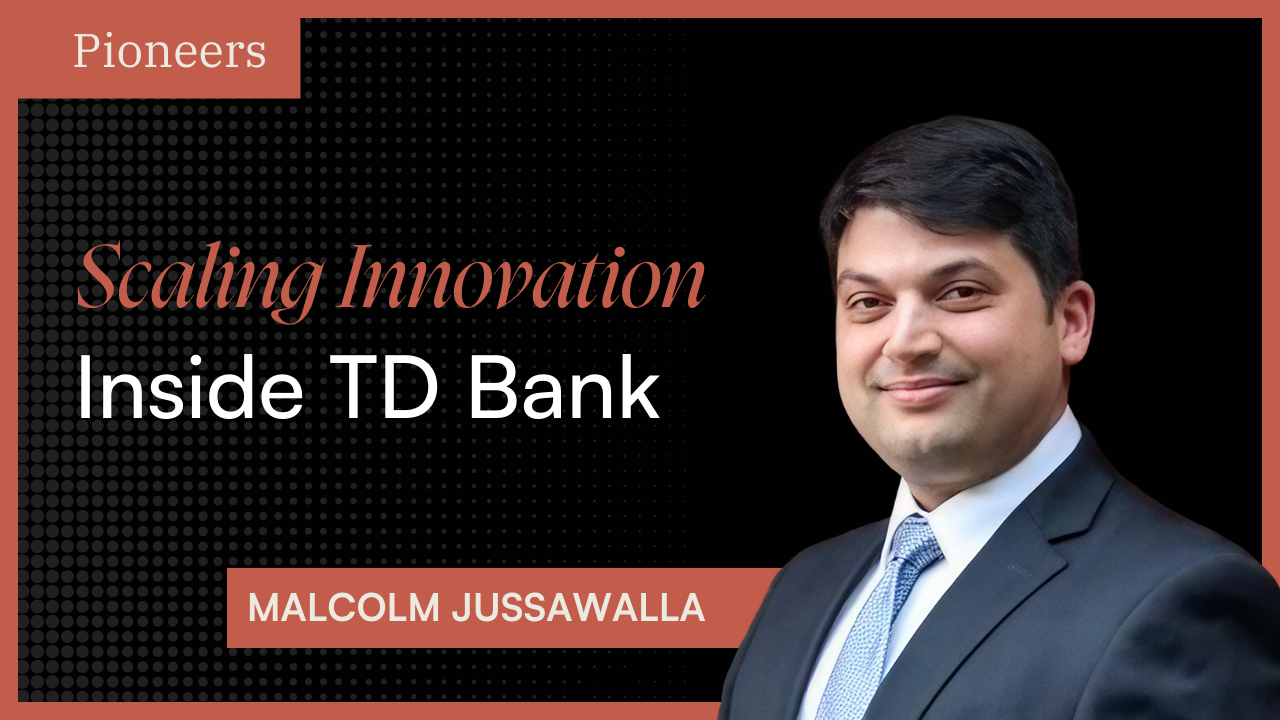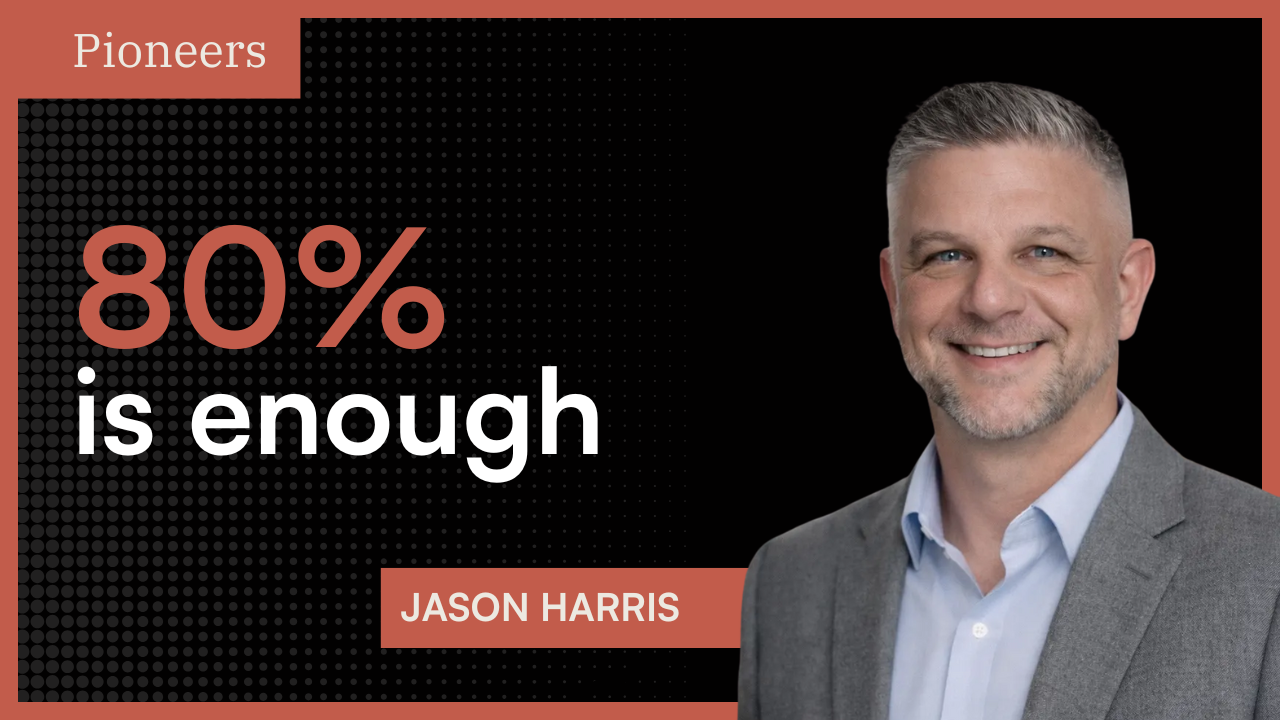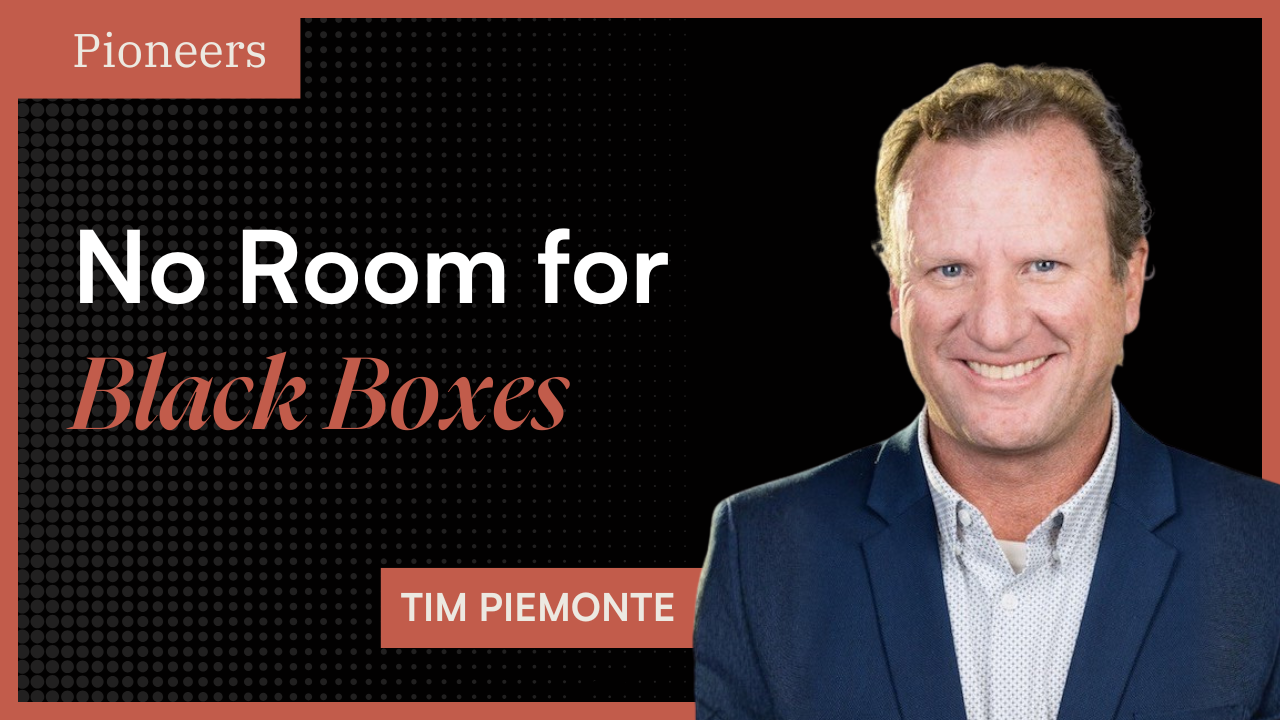This is a summary of an episode of Pioneers, an educational podcast on AI led by our founder. Join 3,600+ business leaders and AI enthusiasts and be the first to know when new episodes go live. Subscribe to our newsletter here.
TL;DR:
- Large banks like TD face a challenge in balancing the speed of fintech innovation with the scale and compliance demands of traditional institutions.
- Partnerships with startups require careful de-risking to avoid wasted time and resources, ensuring pilots can scale beyond proof of concept.
- Malcolm emphasizes that innovation is not just about technology but about aligning business value with customer needs in a highly regulated environment.
- Startups that want to work with banks must understand procurement and compliance processes, which often become the biggest hurdles to adoption.
- Successful innovation requires building bridges across departments, translating startup agility into enterprise impact without losing trust or accountability.
Before we dive into the key takeaways from this episode, be sure to catch the full episode here:
Meet Malcolm - Innovation Strategist at TD Bank
Malcolm Jussawalla, fintech leader and innovation strategist at TD Bank, plays a key role in shaping partnerships, de-risking innovation, and building bridges between startups and one of North America’s largest financial institutions.
His unique background spans both business and technology roles at TD, giving him insight into the challenges of adopting new solutions while protecting customer trust. Malcolm focuses on ensuring that innovation initiatives deliver real business value and can scale responsibly inside complex, regulated environments.
By connecting entrepreneurial energy with enterprise priorities, Malcolm helps foster collaboration that benefits both startups and established players.
He champions responsible experimentation, ensuring that new ideas are tested, validated, and implemented in ways that drive efficiency and long-term impact.
Why Banks Must Balance Innovation and Risk
For large institutions like TD, innovation is essential, but it cannot come at the cost of trust, compliance, or stability.
Malcolm highlights that banks operate in a highly regulated environment where customer trust is paramount. “You can’t just chase the shiny new thing because it looks interesting,” he says.
Instead, innovation must be balanced with the realities of risk management and long-term value. Malcolm explains that technology adoption in banking requires a disciplined approach that aligns business goals with customer needs.
“You have to ask: does this innovation actually solve a problem for our clients, and can we do it responsibly?” — Malcolm Jussawalla
This balance ensures that innovation creates impact without exposing the bank to unnecessary risk.
The Hidden Challenge of Scaling Beyond the Pilot
While pilots often showcase exciting potential, Malcolm points out that scaling them into production is the real challenge.
“The biggest hurdle is moving from proof of concept to implementation,” he says.
Many innovations stall because they fail to navigate procurement, compliance, and operational integration. It is not enough for a startup to demonstrate technical capability.
“Too many companies think pilots equal progress, but value comes from scaling.” — Ankur Patel
“You need to show that you can fit into the way a bank actually operates,” Malcolm notes. This requires addressing regulatory requirements early and ensuring solutions can scale across departments. According to him, successful innovation is measured not by the pilot itself but by its ability to be embedded into enterprise processes that impact customers in meaningful ways.
How Startups Can Build Stronger Bridges to Banks
Startups often underestimate the complexity of working with large financial institutions.
Malcolm stresses the importance of understanding how banks function. “If you don’t speak the language of compliance, you will struggle to get past procurement,” he explains.
(Did you know that only 15% of agentic AI vendors selling to finance actually know finance?)
Building bridges requires more than technology — it demands credibility, trust, and alignment with enterprise priorities. Startups that succeed take time to learn the bank’s processes, tailoring their approach to meet risk and governance standards.
“Innovation is not just about technology; it is about business value and the ability to deliver at scale.” — Malcolm Jussawalla
By bridging cultural and operational gaps, startups position themselves as true partners, capable of driving change inside organizations that are naturally cautious about risk.
The Role of De-Risking in Successful Partnerships
De-risking innovation is central to Malcolm’s approach at TD. He emphasizes that banks cannot afford to pursue partnerships without clear risk management.
“De-risking innovation means making sure we do not end up in costly dead ends.” — Malcolm Jussawalla
This involves carefully vetting potential partners, stress-testing solutions, and ensuring that compliance hurdles are addressed upfront.
Startups that work with banks must recognize that de-risking is not a barrier, but a necessity. “You want to show that you understand our world of regulation and governance,” Malcolm explains.
By reducing uncertainty, both sides can move forward with greater confidence. For Malcolm, de-risking ensures innovation efforts do not just remain experiments but evolve into sustainable solutions that deliver long-term value.
.svg)





.svg)
.svg)

.svg)



